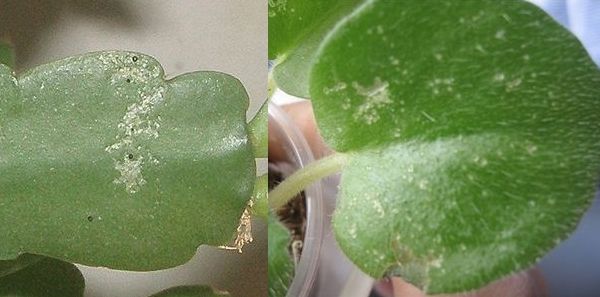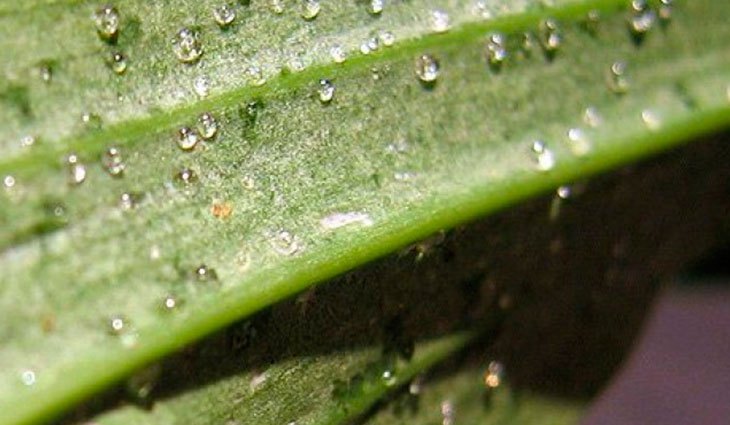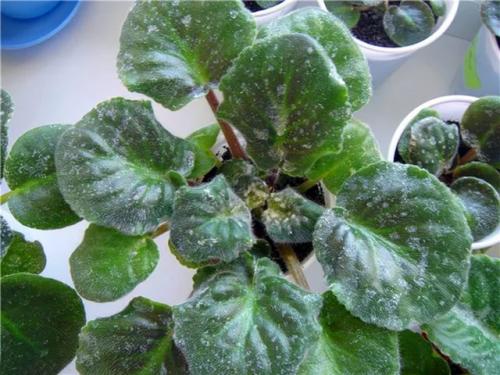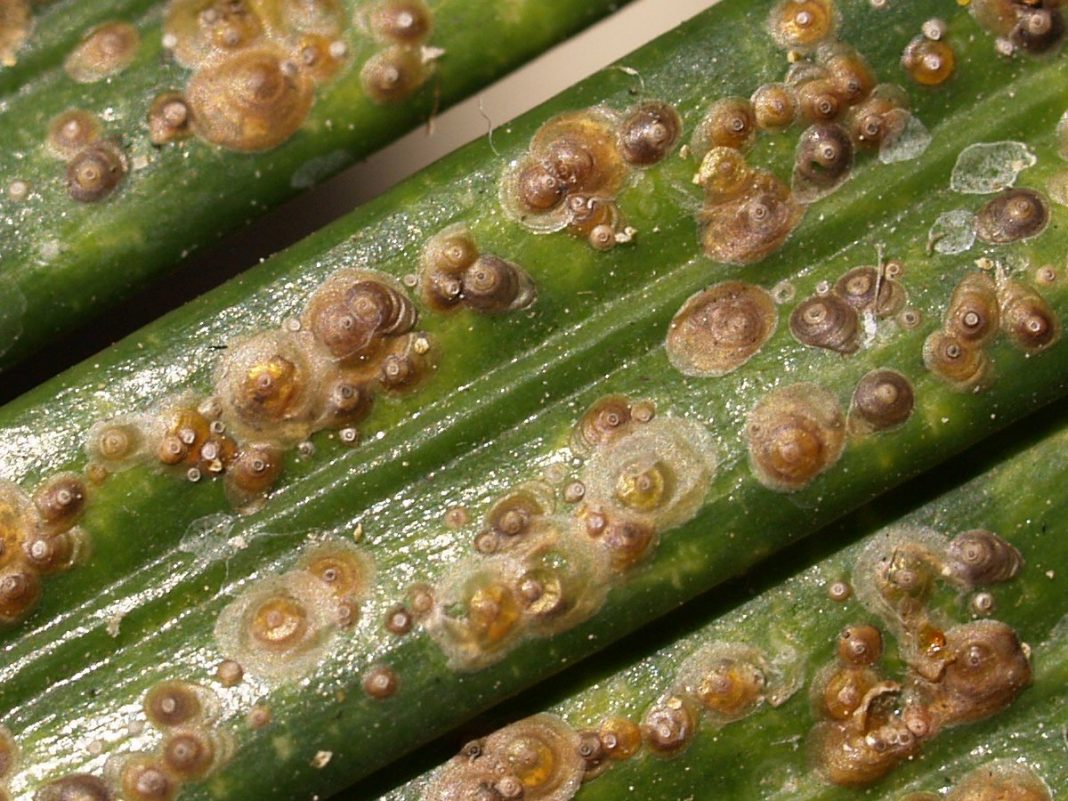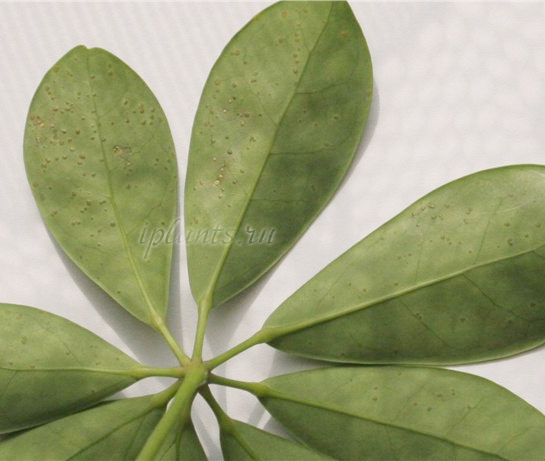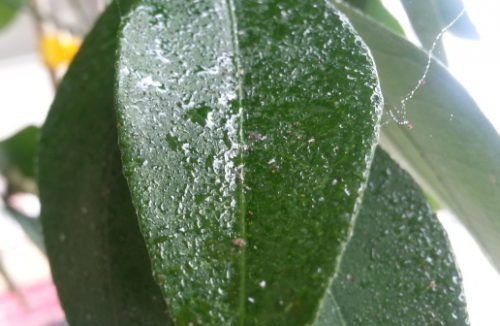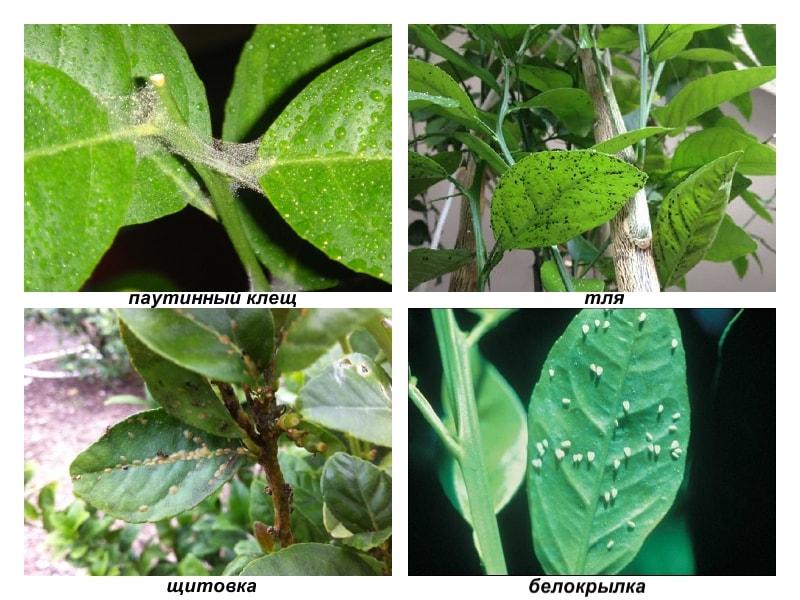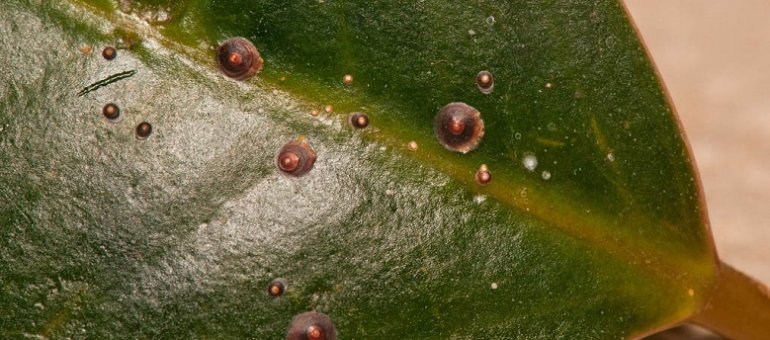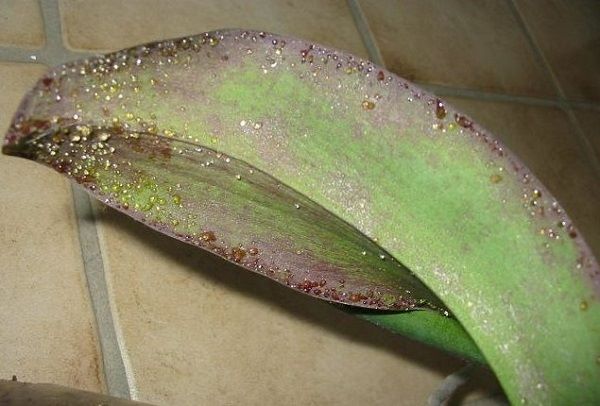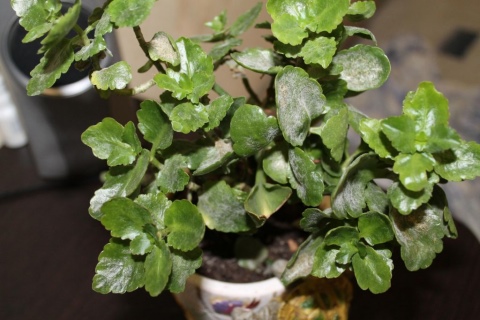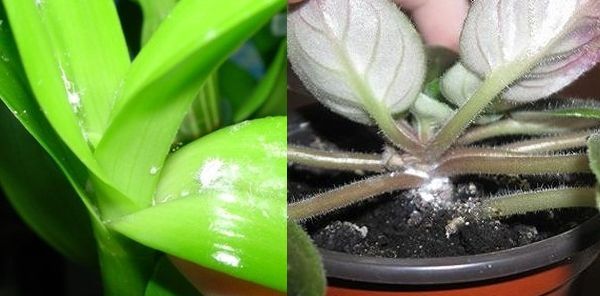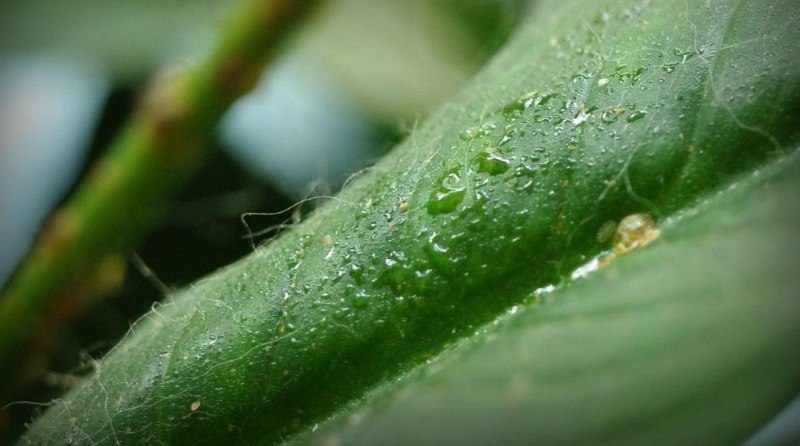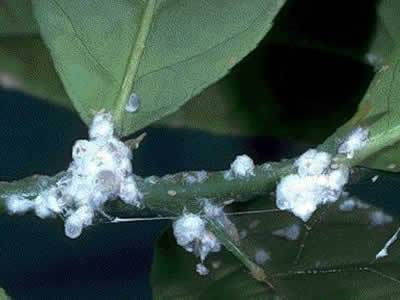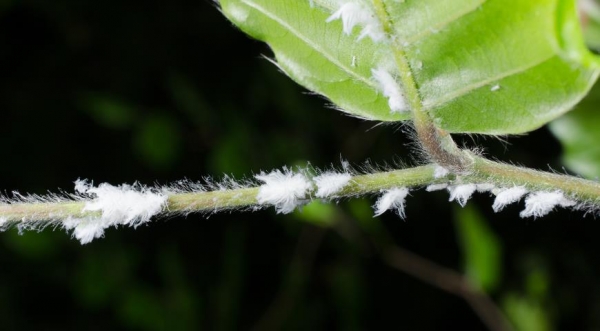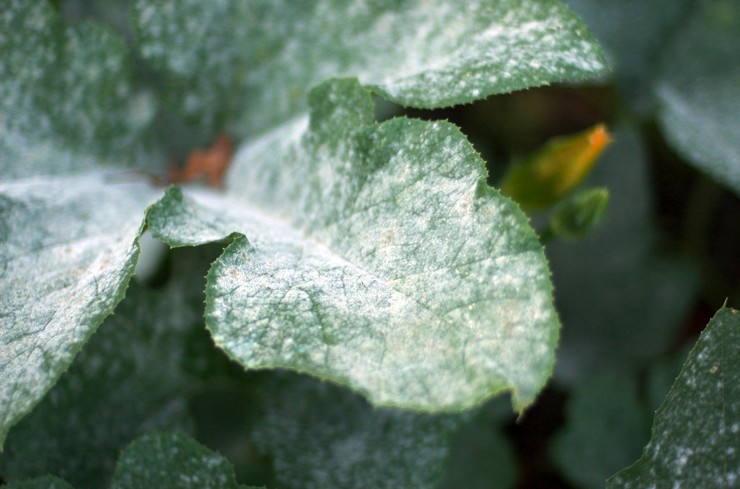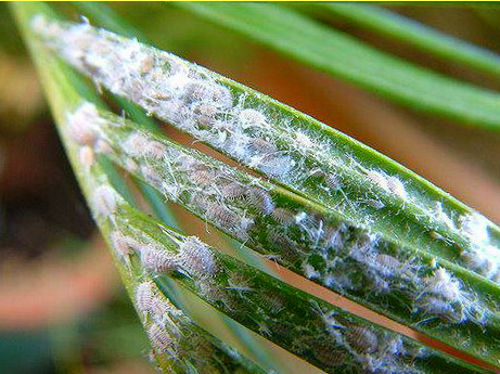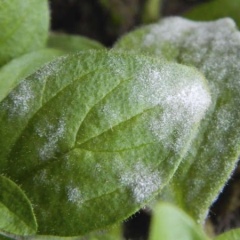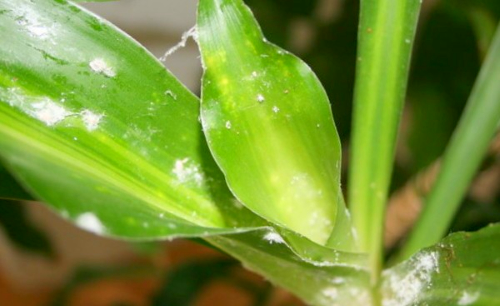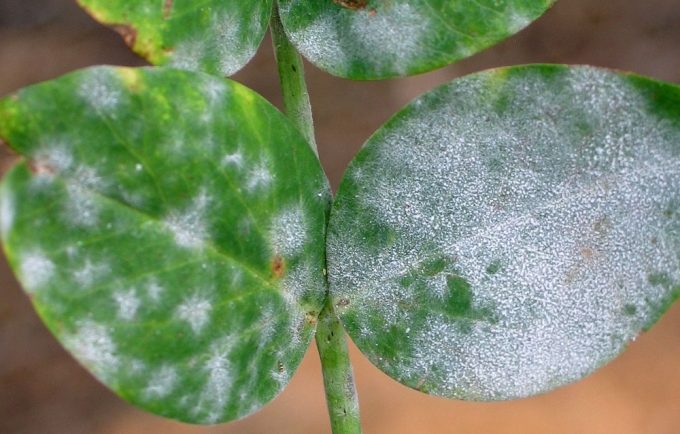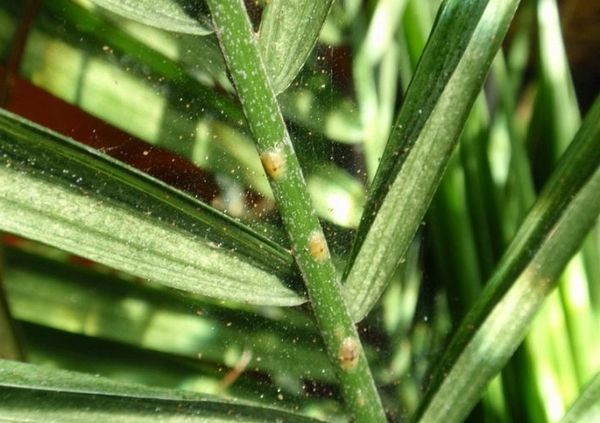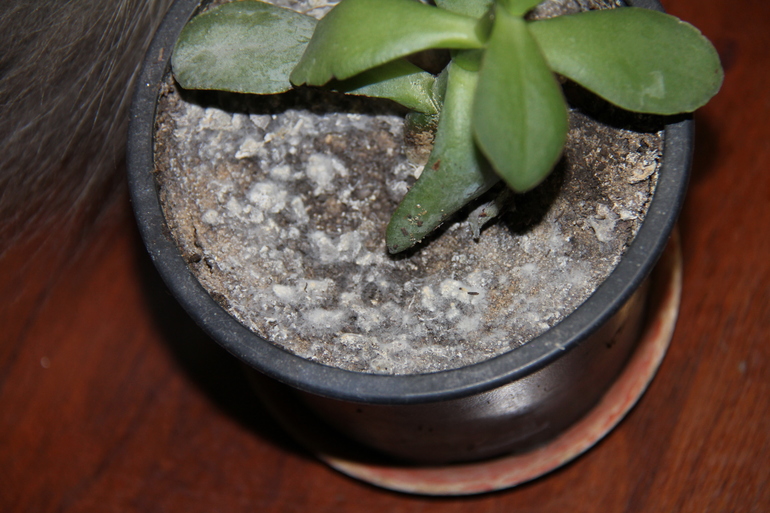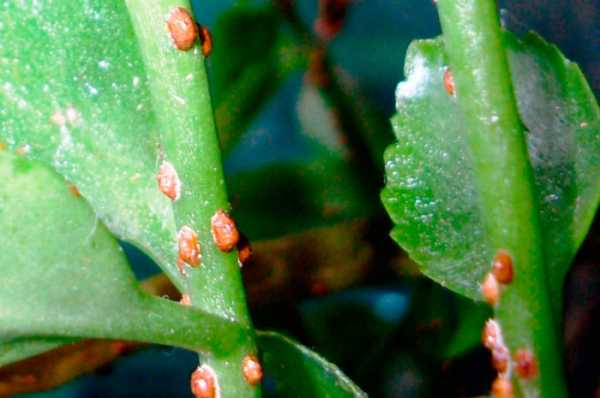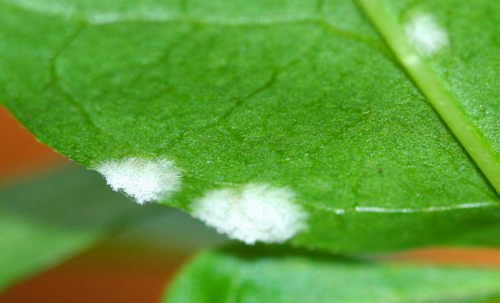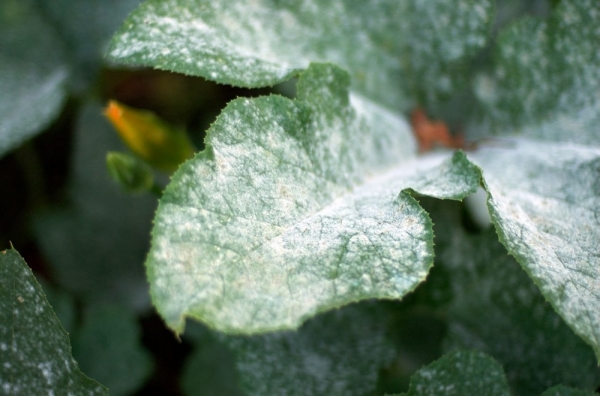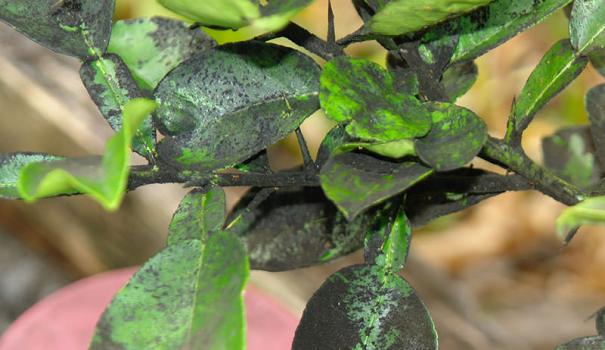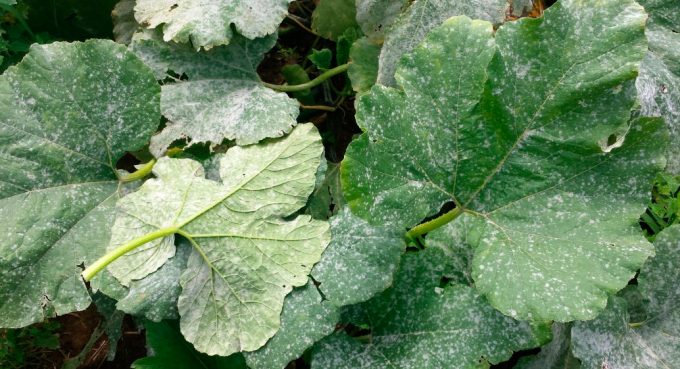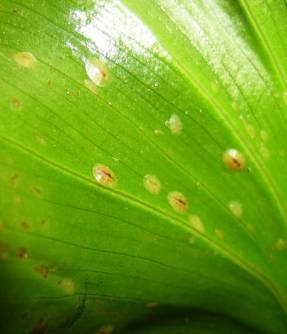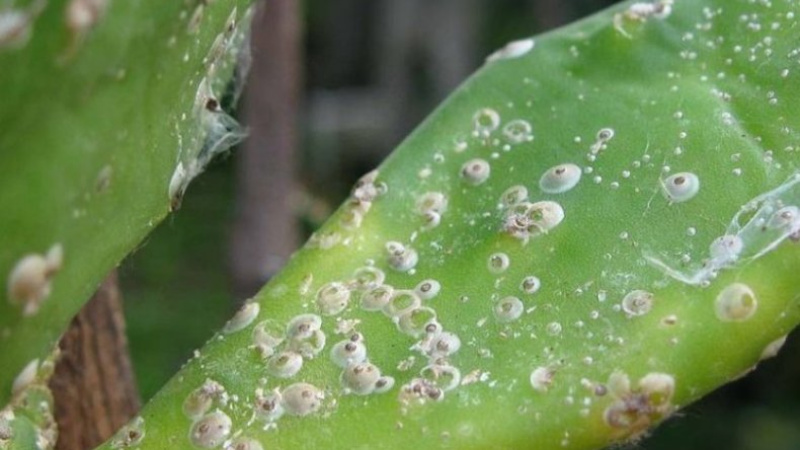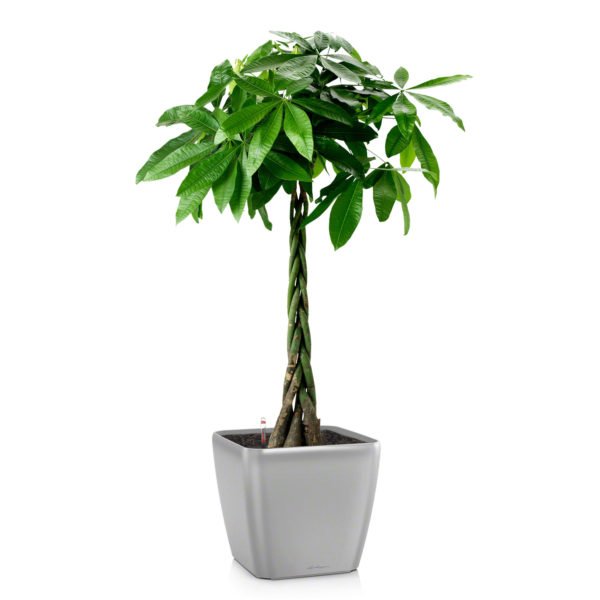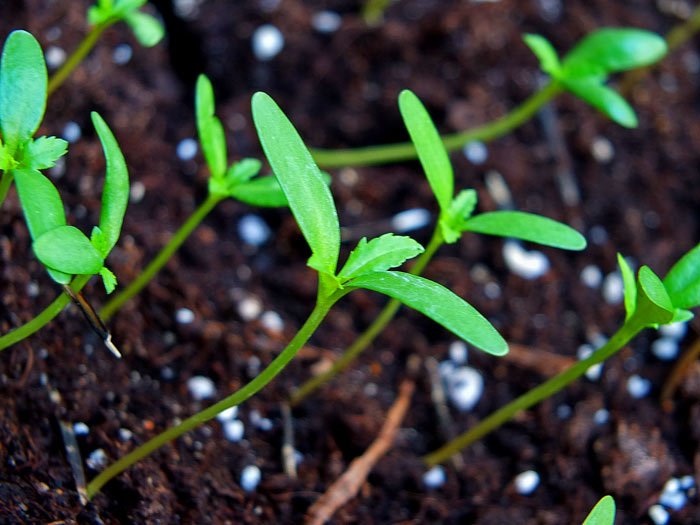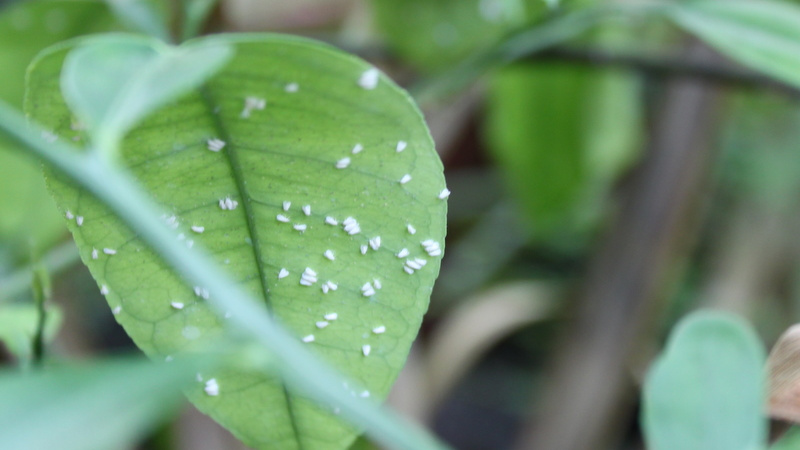Traditional methods of dealing with mealybug
Now you know what a pest is dangerous for plants. You can easily determine that the mealybug has settled on indoor plants.
How to deal with such an insect? With a small focus of infection, you can try to get rid of it without special means.
Popular home control methods:
- Infusion of medicinal herbs. Horsetail, calendula can be used to process the plant. Powder purchased from a pharmacy should be brewed with boiling water. After the agent has cooled, the plant is treated with it. To prepare the infusion, use the following ratios: 100 g of horsetail (calendula) per 1 liter of liquid.
- Garlic tincture. This is a fairly effective method of dealing with mealybugs. Peel and chop a whole medium-sized garlic head. Pour a liter of hot water and let it brew for 4 hours. Garlic tincture is applied to the leaves and stem with cotton wool or a sponge.
- Oil emulsion. Stir 2 tablespoons of olive oil in a liter of warm water. Spray the affected leaves with a spray bottle.
- Soap-alcohol solution. For its preparation, it is better to take natural soap, without perfume additives. For 1 liter of water, 1 teaspoon of grated soap and 1 tablespoon of ethyl alcohol are enough. Spray the affected parts of the plant, avoiding getting the solution on the earthen ball. The procedure can be carried out once every 3 days. It is necessary to wash off the applied product one day after spraying.
- Tincture of lemon and orange peel. An amazingly simple recipe to effectively rid the plant of pests. Take lemon and orange peels and pour boiling water over them. The ratio is as follows: 30-50 g of zest per 1 liter of liquid. During the day, the remedy should be infused. Then treat your green pets with this infusion using a spray bottle.
Signs of appearance
In order to understand what kind of plaque is on your plant, you need to examine it. White bloom can be on the leaves - basically this is the first sign of powdery mildew damage to the plant. Powdery mildew - develops well in high humidity.
The contact of this disease on indoor plants - the soil for planting plants can contribute. If you were gardening, you might have carried it on your clothes or shoes. Ficuses are especially sensitive to this disease.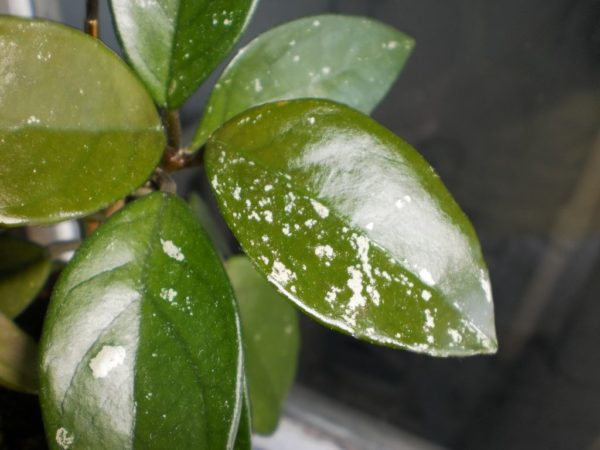
But white bloom can also be a sign of pest damage to the plant. On home flowers, a white bloom like cotton wool can cause mealybugs. This pest also creates a sticky coating on the leaves of indoor plants. On different indoor plants - it manifests itself in different ways.
In case of any defeat by this pest, the plants are covered with a white bloom, subsequently the plant becomes covered with a sticky bloom, shoots are bent, growth stops, since this pest sucks out the juice and covers the leaves with a sticky bloom. This significantly reduces the ability of any plant to develop and grow fully.
Less often - but it is possible, there may be aphid infestation, a large accumulation of these pests can form a plaque on the plant.
There may also be white bloom on the ground - this is the main sign of a fungal disease, and this happens with excessive watering and poor drainage in a pot with a plant.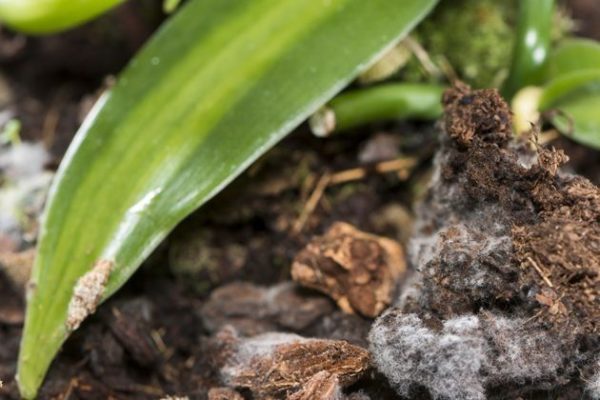
So, the causes of white bloom on indoor plants can be caused by pests, fungal diseases.
Control methods
If signs of vital activity of the mealybug are found:
- The flower is isolated from other plants;
- Mechanical cleaning is carried out - all ovaries and flowers, as well as infected leaves are removed, hard-to-reach areas are treated with a cotton swab or the plant is washed under running warm water;
- Severely affected foliage is removed;
- Create comfortable conditions for the orchid, raise the temperature and humidity of the content;
- The window sill and objects next to the diseased flower are wiped, since pests can also be on them.
At the final stage, the orchid is treated with folk remedies or insecticides.
Folk remedies
These methods are suitable in the early stages of an orchid infestation:
- Soap-alcohol solution - crushed soap (a teaspoon) and two tablespoons of alcohol or 4 tablespoons of vodka are added to one liter of water. The finished product is used to wipe the leaves, stems and leaf sinuses, carefully process the inside of the leaf;
- Two cloves of garlic are crushed and diluted in a liter of water. The orchid is sprayed with the resulting composition and kept under a plastic bag for a day;
- The plant is wiped with an infusion of calendula on alcohol or an aqueous tincture of tobacco.
Flower processing is carried out every 3-4 days until the complete disappearance of the pest. It is advisable to alternate home remedies to increase the effectiveness of treatment.
Chemical and biological products
Fitosporin is one of the biological products. Spraying is carried out 2-3 times with an interval of seven days. If the remedy does not help, you will have to turn to chemistry.
Attention! Insecticides are used only in the most advanced cases, when wiping and home remedies do not help.
The adult worm is covered with a waxy layer, so contact drugs are weak on it.
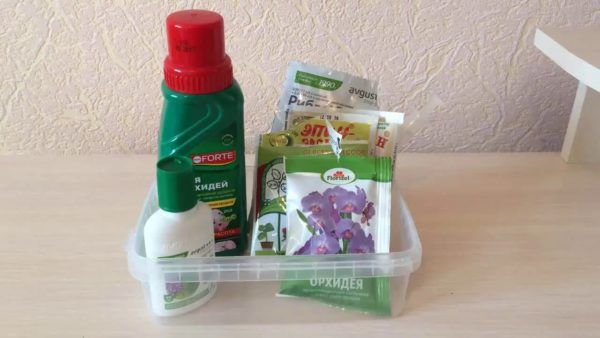
When the state of the orchid is neglected, various preparations should be used.
To destroy them, it is better to use systemic insecticides:
- Aktara;
- Engio;
- Confidor Maxi;
- Calypso.
Apply them in the form of a solution for spraying plants, dilute the product according to the instructions. Since the active ingredient does not affect insect eggs, re-processing is carried out 3-4 times with an interval of 10-14 days.
Features of the use of chemistry
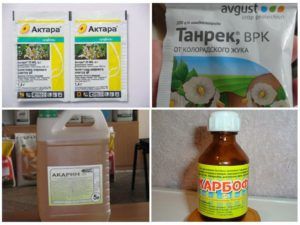 When working with insecticides, strict adherence to safety rules is necessary:
When working with insecticides, strict adherence to safety rules is necessary:
- Work with chemicals is carried out in gloves and a respirator;
- After the end of the work, the tools are washed, stored in a special place;
- In case of contact with the skin, the insecticide is washed off with water and detergents. If the product gets into the eyes, rinse with running water;
- When carrying out work, it is prohibited to eat and drink.
Subject to the instructions of the drug, it does not have a harmful effect on the orchid.
Scabbard is a dangerous insect
A small pest is covered with a shield, under which thousands of eggs live. Immobile females are tightly attached to the plant with their proboscis and suck out juices. Males or juveniles migrate, infecting the indoor greenhouse. Shield aphids leave honeydew - a sweet sticky secret.
At home, insects breed year-round, do not go to winter rest. Eggs appear continuously - 5-6 new generations are formed per year. Colonies quickly destroy indoor flowers.
Peculiarity! Part of the mobile larvae (vagabonds) gets into the apartment with the wind.
The scale insect affects all types of plants, even those that are poisonous to other pests. Favorite species: citrus, palm, bromeliads. Females live equally successfully on orchids, lemons, ficuses, ivies, cacti, and fat women.

Traditional methods of treating white plaque
In addition to store drugs, you can use folk methods. Folk remedies are inexpensive and readily available. If limescale deposits appear:
- You need to try to determine the cause. If you have hard water, soften with lemon juice.
- Change the soil to a lighter one by first calcining it.
- Drain.
- Try to water it properly so as not to cause waterlogging or drying out of the flower's earthy coma.
- Set aside the pot from the central heating radiators and fireplace.
- Humidify the air regularly, especially in winter.
When a fungal infection occurs:
- Sprinkle the ground with crushed coal.
- Change the top layer of earth to a new one. If that doesn't work, transplant into a new pot of cultivated soil.
- Do not overfill the plant. Spores thrive in humid environments. Watch out for watering.
- Move the plant to a warmer room.
- You can water the flower with a weak solution of potassium permanganate.
- Mold on flower soil - prevention
In order for the plant to please you all year round, try to properly care for it:
- Find out how exactly to water your plant. Many people prefer moderate watering, and some plants need more frequent watering.
- Repot the flower regularly. Always lay expanded clay on the bottom.
- Calcine the soil before planting. There may be a fungal infection in the store soil, and you infect the plant when transplanting.
- Purchase special treatment products from a specialist store.
- Check the soil periodically for moisture.
- Transplant the flower in autumn or early spring: it will not hurt and will take root well.
- When processing with minerals, read the instructions, then fertilize.
Important!
Mold is harmful to everyone with color, so take steps to remove it immediately. This will protect the plant and prevent it from dying. Remember that fungal spores can spread. Protect other shoots from contamination by keeping the pot away from them.

If you have a white bloom on the surface of the flower pot, do not despair. Find out if it's caused by poor watering or mold. Try to follow the advice, and the plant will delight you with its appearance and grow well all year round. Inspect the ground regularly. If mold appears, try to remove it right away.
Preventive actions
First of all, it is necessary to exclude the possibility of pathogens entering the indoor flower garden. For this, new settlers are kept in quarantine, away from other plants, for at least two weeks. When transplanting, only disinfected soil is used. Proper care will help prevent illness.
Necessary:
- Regularly inspect indoor flowers, identify pests, spots, growths, any signs of trouble.
- Remove dust and dirt from leaves.
- Do sanitary pruning.
- To create an optimal temperature and humidity regime for plants.
- Water the flowers in a timely manner, but without waterlogging. Apply fertilizers with a balanced composition.
Proper care will help prevent infection. Will increase the resistance of plant organisms to pathogens.
5/5 (1 vote)
White sticky bloom on indoor flowers: how to get rid of
Sticky plaque on the leaves of indoor plants is left only by scale insects. How to deal with it, the florist forums will tell you. Chemicals will be effective:
- Aktara is a fast-acting drug that destroys any pests of indoor plants. To prepare the composition, 1 g of powder is dissolved in 1 liter of water. The leaves of the flower are sprayed, a small amount of the product is poured under the root. Plants do not get used to the drug, so the treatment can be carried out several times after 10 days;
- fitoverm is a means of biological origin. Penetrates pests through the skin and gastrointestinal tract. It has a detrimental effect on the nervous system. A few hours after spraying, the insects stop feeding and die. To prepare a solution, you need to take 2 liters of water and 2 g of the drug. 3-4 procedures are carried out with an interval of five days;
- confidor is a fast-acting effective insecticide. 1 g of the substance is dissolved in 0.5 l of water. The effect occurs after 3 hours, the drug enters the gastrointestinal tract of the scabbard, and it dies. It is recommended to spill the soil in a flowerpot, but prepare a solution with a lower concentration;
- in case of a strong outbreak of the scabbard, it is necessary to use actellic (the ampoule of the agent is diluted in 1 liter of water). Processing is carried out only outdoors.

Scabbard Fight
Important! Getting rid of the scale insect will be facilitated by the phytoverm remedy, as the safest, or Aktara, a powerful systemic insecticide. If, after processing the indoor flower, the effect does not occur, then you need to change the drug
Plant chemical treatment plan
The frequency of chemical treatment depends on the air temperature.
| List of professions | Regulatory order of issue |
| Builders | signal form; gloves; PPE for face and ears; vibration reducing agents |
| Drivers | mittens; warm suit; safety shoes |
| Movers | overalls; gloves; jackets; pants. |
| Sales staff | kerchiefs; gloves; bathrobes |
| Agricultural employees | gloves; shoes; mittens. |
| Electrical workers | dielectric special gloves; safety footwear; headdress; outerwear; thermal underwear for dielectrics. |
Important! Treatment with any drug will give an immediate result, therefore, it is necessary to remove the scabbard in a comprehensive manner.
How to deal with mealybugs on indoor plants?
Lepidocide is used to destroy the pest from biological preparations.
Effective chemicals
You can get rid of the mealybug by spraying indoor crops: Thiofos, Aktellik, Vertimek, Nurell-D, Fozalon, Fitoverm, Fosbecis, karbofos, Tsvetofos, Intavir, Decis. After spraying, take a week off and repeat spraying. The least dangerous for humans and animals is Fitoverm. Pour 2 ml Fitoverm into a glass of water, stir and spray the indoor culture. The treatment is repeated after a week. You can add a little dishwashing liquid to the insecticide to stick to the parasites.
A solution of these chemicals is absorbed by the roots of the crop and spread throughout the plant. As a result, the parasites that suck the juices poison themselves and die.
Treatment with folk remedies
If there are few bugs, then to fight parasites, moisten a soft brush or cotton swab in soap and water. Gently rub the plant with it, removing parasites and white secretions. Then rinse the plant thoroughly in the shower, especially the lower part of the foliage.
Next, spray with a solution of green soap, rubbing 10-15 g in 1 liter of water. Do this spray 3 times at weekly intervals. You can use tobacco infusion, garlic juice, onion juice or cyclamen broth instead of soap. You can treat the plant with alcohol or calendula tincture. Place tangerine or orange peels in the water, leave for 1-2 days, and then sprinkle the culture with infusion.
Grate 1 teaspoon of soap, pour in hot water. Then add water so that the result is 1 liter, pour in 1 tbsp. a spoonful of alcohol or 2 tbsp. spoons of vodka. Cover the soil in the pot with something, and then wet the cotton wool in a solution of alcohol, collect all the pests, change the cotton wool from time to time. Rinse the culture with warm water the next day. And after 3-4 days, repeat the treatment.
Mash 25-70 g of garlic, pour in 1 liter of boiling water, leave for 6 hours, and then wipe the indoor culture with a brush soaked in infusion. Do this in the evening. Then cover the plant from sunlight for 2 days.
Pour in 2 tbsp. tablespoons of olive oil in 1 liter of water. Wipe the entire plant with a dampened cotton swab.
Collect the horsetail herb, dry it, chop it, add 4 teaspoons of the herb to 0.5 liters of boiling water. Leave it on for 20 minutes. Strain the infusion, spray and water the culture.
Mealybug on an orchid: treatment
Orchids are mainly attacked by citrus and bristly mealybugs. Females of the bristly mealybug are reddish and covered with a whitish bloom. Long hairs are visible behind their bodies. Males are grayish, they have transparent wings.
Healthy, well-groomed orchids secrete substances that repel a variety of insects, including mealybugs. Therefore, a mealybug on an orchid appears if the plant is sick.
Mealybug, how to deal with indoor plants?
If you see parasites on the orchid, then isolate the plant from others. Tear off diseased buds and discard them, wipe the leaves with a cotton swab. Peel the sprouts and trim them 1 cm. If you see pests in the middle, remove them with tweezers. Remove the scales from the pseudobulb.
Then grate the dark laundry soap, add it to the settled water and mix. Next, carefully wipe the foliage and stems of the orchid with the resulting foam. Finally, treat the culture with copper sulfate or another fungicide. It is required that fungicides do not hit the ground.
Mealybug appears on violets for the following reasons:
- moving pests from newly acquired crops to old ones;
- the use of pest-infected land;
- excessive nitrogen feeding;
- lack of moisture.
If you notice parasites, then remove the violet from the pot, shake the substrate from the roots, treat it with an insecticide, and transplant it into new soil.
Pour the flowerpots with boiling water or a bleach solution. Treat all the crops standing next to the windowsill, In addition, wipe the shelves and windowsills with bleach and alcohol. All this is required to do, wearing disposable gloves, it is better to burn them then, and then wash your hands with soap and water. Spray the plants with Actellik, pouring 2 ml into 1 liter of water. Then, after a week, do the treatment again.
You can water the soil in the flowerpot with Aktara's solution, adding 1.4 g to 2 liters of clean water. Then sprinkle on the violet itself. Then wait 1 month and repeat everything again. Or use Phosphamide, it enters the culture in solution, and then insects that suck the juices get poisoned and die. To work with pesticides, wear a respirator.
Step by step instructions on how to deal with home remedies and chemicals
Let's figure out how to get rid of the white bloom that affects the plant on home orchids. Flower treatment depends on the exact cause of the plaque on the leaves or other parts of the plant. When infected with powdery mildew or mealybug, various therapeutic measures are required.
But mandatory general actions:
- isolating the infected orchid from other plants;
- removal of all damaged parts (leaves, buds), cover the cuts with crushed activated carbon;
- only after removing the infected leaves can the treatment begin.
How to treat powdery mildew infection?
It is necessary to remove the top soil layer and pour new soil into the pot. It is advisable to take a special soil substrate, and not ordinary soil from the garden. Sprinkle the new soil from above with ash (thickness up to 2 cm). What are the next steps to take?
- For mild damage, safe homemade decoctions can be prepared. You can take horsetail grass (100 g per 1 liter of water), garlic (50 g of chopped slices per 2 liters of water), onion husks (200 g per 10 liters of water). Be sure to boil and insist. Dilute with water before processing. Spray through a spray bottle.
- In case of mass destruction, chemical treatment is indicated. These are copper-containing fungicides or antifungal agents. Colloidal sulfur or Fitosporin is suitable. Look for the dosage on the package.
- Disinfection of the place where the pot stood with an antiseptic. The goal is to kill the remaining spores.
What to do if a mealybug appears?
Collect all insects from the plant by hand, wipe the leaves with diluted alcohol or soapy water (water and laundry or tar soap).
If you see that there are too many insects, the help of chemicals is required.
- We need to take insecticides. These are Aktara, Aktellik, Mospilan, Fitoverm. Observe the dosage for home flowers. Treat with protective gloves.
- Next, place the orchid in a bag, spray the plant and tie the bag for 2-2.5 hours.
- After the expiration date, remove the orchid and wash with soapy water.
- Repeat the treatment 3-4 times, the time interval between procedures is 10-14 days.
Obligatory additional actions - disinfection of the soil in the pot and the place where the pot stood with an antiseptic. You also need to carefully examine the neighbors of the infected orchid, or better, send all neighboring flowers to quarantine for 14 days.
From the video you will learn how to treat an orchid for a mealybug:
Also, sometimes orchids turn yellow, turn black, their roots change color, leaves crack. You can read about these problems on our website.
Why is the soil in the pot covered with a white coating?
In most cases, the initial formation of whitish deposits on the soil is a sign of improper care or, less often, a consequence of fungal infection. As a result, salt deposits appear on the surface or mold begins to grow.
Many growers, both beginners and already quite experienced, are faced with such a problem as mold in a flower pot.
Substrate type
Ornamental plants should not be planted in the first available soil. Often, white bloom on the flowers of indoor varieties appears only due to the fact that the purchased substrate was intended for seedlings and is saturated with mineral fertilizers, while the plant is already an adult specimen that does not need intensive feeding.
 It is necessary to let the top layer of the soil dry out a little.
It is necessary to let the top layer of the soil dry out a little.
In addition, the very nature and composition of the soil can lead to the described effect. "Heavy" soil is characterized by high density and promotes rapid evaporation of moisture due to the formation of capillaries. Salting can also occur due to the deterioration of the quality of the growing environment itself.
Care and watering regime
Excess moisture, as well as its lack, is often the reason that white bloom appears on the ground in flowerpots.
 The main cause of white bloom is the wrong way of watering.
The main cause of white bloom is the wrong way of watering.
Also, the following negative factors can lead to its occurrence:
- Failure to comply with the temperature regime.
- Excessive humidity in the room
- Overfeeding (a clear surplus of mineral fertilizers).
- Using water that is too hard.
Wrong pot
Failure to follow care recommendations novice florists often understand as poor lighting or errors in watering mode.
 Difficulty drainage at the bottom of the pot and, as a result, excess moisture, is the cause of the appearance of white bloom.
Difficulty drainage at the bottom of the pot and, as a result, excess moisture, is the cause of the appearance of white bloom.
Few people think that such an unobvious thing as the discrepancy between the volume of a flower pot and the size of the root system can cause similar problems: a tiny plant in a large space cannot cope with the "development" of such an area.
 You can simply remove all the white layer of the earth and add a new one.
You can simply remove all the white layer of the earth and add a new one.
As a result - the appearance of white soil and questions: "Why does plaque appear on flower pots and how to deal with it?"
Fungus infection
The mealy, fluffy or pronounced feathery nature of the deposits, often accompanied by an unpleasant putrefactive odor, is a clear sign of the presence of fungus in the soil.
 White bloom on the surface of the earth in a pot can be caused by the development of fungal microflora.
White bloom on the surface of the earth in a pot can be caused by the development of fungal microflora.
The reason for this can be both excess moisture and poor-quality soil. Typically, this mold is not terrible for plants that have gone through a period of rapid growth. However, this does not mean that nothing should be done. There are types of fungi that can be dangerous to humans.
White bloom on the ground: disinfection and decontamination
Unfortunately, most types of mold are not easy to remove. Most of the recommendations on this issue are reduced to replacing the soil and planting container. Moreover, a prerequisite is their high-quality disinfection. This requirement is due to the fact that the spores of some fungi are extremely tenacious.
 Discard any fertilizers while the flower is sick!
Discard any fertilizers while the flower is sick!
The best method is calcination - the ground or substrate is subjected to prolonged temperature heating (more than 90 degrees) for half an hour. You can use an oven or oven for this.
 It is necessary to understand the features of each disease in order to choose the right drugs for treatment.
It is necessary to understand the features of each disease in order to choose the right drugs for treatment.
An alternative is steaming - pour a little water into the pan, and cover the top with gauze or a thin cloth. Prepared soil is poured onto the fabric and covered with a lid, after which the water should boil. Then you need to boil everything for at least 25-30 minutes, but it is advisable to hold the soil longer, so that later again you will not be surprised why plaque appears on the pots of indoor plants!
 For plants that need high humidity.
For plants that need high humidity.
Description of diseases of a houseplant with a photo, as well as the necessary treatment
Alternaria
The cause of this indoor gerbera disease is an infection with a fungus of the Alternaria family. It spreads through seeds or various plant debris and is sometimes carried by insects. It is not difficult to determine that the plant is infected: dry spots of a clear brown-red color appear on the leaves. As the condition of the plant deteriorates, these spots fade in the center. Then the leaves turn yellow, dry out on the affected parts and become covered with a bloom of a dark greenish color - these are fungal spores (read about why gerbera leaves turn yellow and how to cure it here).
Treatment instruction:
Review the watering and nutrition regime
The fungus develops well in an excessively humid environment on weakened plants, which means that you should pay attention to feeding the flower.
Treat the plant with fungicides - drugs to combat fungal diseases. For gerberas, Ridomil Gold is suitable.
Defeat by gray mold
This disease also causes harmful fungus. As in the previous case, its reproduction can be triggered by excessive moisture in the soil and leaves. This disease can be recognized by the characteristic gray bloom that covers the plant. Without treatment, the flower withers quickly.
Treatment instruction:
- Change the amount of watering, thus removing the environment favorable for the development of the fungus.
- Treat with fungicides. In this case, Rovral and Fundazol are suitable.
- Change the soil under the plant. These fungi settle in the ground for a long time, so it is necessary to exclude re-infection of the plant.
Cucumber mosaic
Reference. Unlike the previous ones, this disease is considered a viral one. It is carried by insects such as aphids.
The disease can be identified by the appearance of clearly outlined yellow-green spots on the leaves. With the development of the disease, the entire leaf is deformed, sometimes pigmentation appears along the veins.
Treatment instruction:
- Treat with insecticides.
- Keep away from plants of the Pumpkin family.
Late blight and sclerotinosis
Both of these diseases are caused by harmful fungi entering the soil. It is possible to identify late blight in gerbera by the sudden drying of the leaves on the outside of the outlet. With the development of the disease, both the inner parts of the rosette and the flowers dry out. At the same time, the roots rot, and the plant dies.
On a note. Sclerotiniasis can be easily identified by the rapid deterioration of the plant's condition, depressed spots on the leaves, on which a pale bloom later appears.
Treatment instruction:
- Stop watering.
- Change the soil from wet to dry.
- Treat with fungicides. Ridomil and Profit Gold are suitable for the destruction of late blight, and Vitaros Fundazol is suitable for sclerotinosis.
Powdery mildew
This is a fungal disease that appears due to high humidity, temperature and excess fertilizers in the soil. You can determine that the gerbera is infected by the white bloom on the leaf stalks. In advanced cases, plaque covers the entire plant and destroys it.
Treatment instructions:
- Strengthen the ventilation of the room and give the flower more light.
- Treat with fungicides Topaz and Fundazol.
From the video you will learn what powdery mildew looks like on a gerbera, how to deal with it:
Chemicals
In the final stage of the fight, spray with insecticides. They are most effective in May-July, when females are inactive and have not had time to build up protective shields. The best results are demonstrated by the entero-contact preparations Fitoverm, Aktara (KS, IOP). Use a solution for repeated watering of the soil, spraying.
Processing principles:
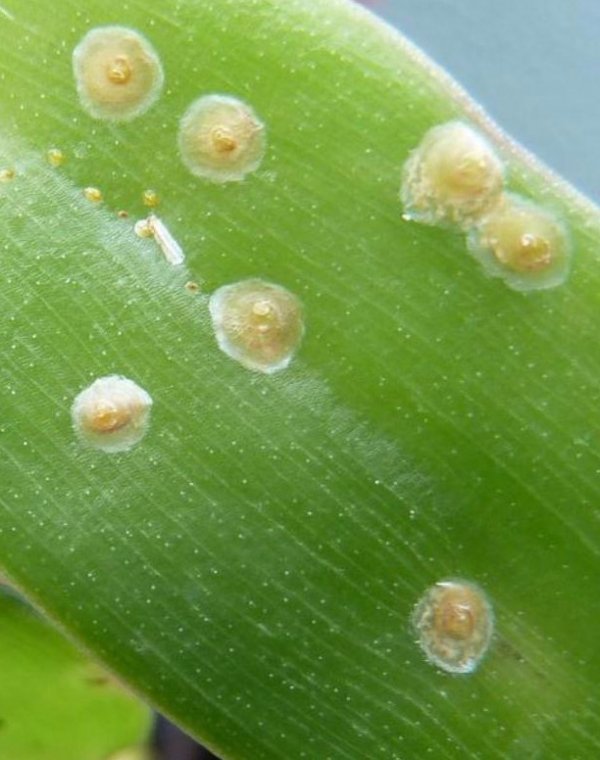
1. After wetting with insecticide, place the flower in a bag for 30-40 minutes.
2. Shower to remove chemicals and dead specimens.
3. Repeat spraying after 2 weeks. This will destroy the remaining beetles that escaped and escaped the first treatment.
4. Regularly check the aboveground part with a magnifying glass, like other indoor flowers
Pay attention to the trunks, sinuses, lower parts of the plates
We treat and prevent the disease
In most cases, the flower garden suffers from rust due to the fault of the owners themselves - this means that they do not properly care for their plants. In order to prevent the formation and spread of the fungus in the spring, all flowers should be treated with a 1% solution of the Bordeaux mixture.
What to do if a fungus still settled on the plant and its leaves began to rust? First of all, it is important to prevent infection of neighboring plants, even if the diseased flower can no longer be saved. Therefore, a sick flower must be immediately taken to the hotel room.
The affected leaves all break off, even if there are only a few small specks of rust on them. Then they need to be burned away from the flower garden.

Bordeaux mixture is used to fight rust on indoor and garden plants.

